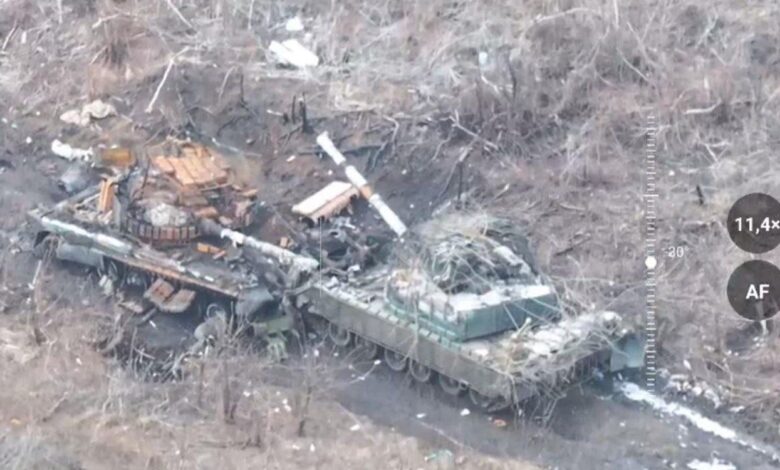Russia Lost 10% Of Its Deployed Tanks Trying To Capture Avdiivka

Wrecked Russian tanks south of Avdiivka.
Kriegsforscher capture
The four-month battle for Avdiivka probably is culminating as the Ukrainian garrison in the ruined city, just five miles northwest of Russian-occupied Donetsk in eastern Ukraine, runs out of ammunition—a direct consequence of Russia-aligned Republicans in the U.S. Congress withholding aid—and Russian infantry creep into the city from north and south, threatening the garrison’s supply lines.
It’s a painful loss for Ukraine—the first large settlement it’s lost to Russia in nearly a year—but, as a win, it’s potentially even more painful for Russia. In capturing a few square miles of demolished and depopulated urban terrain, the Kremlin has sacrificed almost exactly an entire mechanized division’s worth of tanks.
As open-source analyst @partisan_oleg pointed out, before the fall of the Soviet Union a 10,000-person motor-rifle division on paper would have 220 tanks. The Russian army still broadly adheres to Soviet force-design.
Since attacking Avdiivka in early October, the Russian 2nd and 41st Combined Arms Armies have lost 214 tanks that analyst @naalsio26 has counted. Mostly T-72s and T-80s, but also a few high-end T-90s. The Ukrainian brigades in and around Avdiivka meanwhile have lost just 18 tanks.
Russian tanks losses just around Avdiivka amount to potentially more than a tenth of all the tanks Russian forces have in Ukraine.
The Russians can’t blame the 12-to-one loss ratio on the Ukrainians not deploying tanks in their defensive campaign in Avdiivka: the Ukrainians did deploy tanks, including some of their best German-made Leopard 2A6s—before chopping those tanks to a brigade holding the line around Kreminna, 50 miles to the north.
Nor can the Russians point to the traditional advantage a dug-in defender has over an exposed attacker. Historically, an attacker should expect to suffer three times the losses a defender suffers.
No, the Ukrainians simply outfought the Russians with mines, artillery, drones, missiles and old-fashioned rifle fire from entrenched positions. And they did it despite gradually running out of ammunition after Republicans withheld U.S. aid to Ukraine starting in October.
In losing four times as many tanks as they should expect to lose, the Russians fell into an attrition trap. They might capture what’s left of Avdiivka, but if the Ukrainian garrison withdraws now, the Russians will win the ruins at a cost in people and equipment they probably can’t make good very quickly—and likely not without slowing the pace of operations elsewhere along the 600-mile front of Russia’s 23-month wider war on Ukraine.
The problem, of course, is that the Ukrainian garrison in Avdiivka might not retreat. If, at the orders of Ukraine’s eastern command or new commander-in-chief Gen. Oleksandr Syrsky, the garrison fights to the last person, it risks surrendering its attritional advantage.
This has happened before. The last time the Russians surrounded a large Ukrainian settlement—Bakhmut, last May—Syrsky, then the head of Ukrainian ground forces, probably kept Bakhmut’s garrison in the eastern city’s ruins too long.
“While Bakhmut initially unfolded as a success story for Ukraine, with Russians sustaining significant casualties, at times reaching a ratio of 1:7 or 1:10, the situation swiftly changed,” Ukrainian analysis group Frontelligence Insight explained. “Once Russian forces managed to seize Ukrainian flanks and disrupt supply routes, the casualty rates almost equaled.”
It’s not too late for the Avdiivka battle to hurt Russia far more than it hurts Ukraine, even as Russia “wins” the fight. But, for the Ukrainians, snatching victory from defeat means knowing when to retreat.
Follow me on Twitter. Check out my website or some of my other work here. Send me a secure tip.



